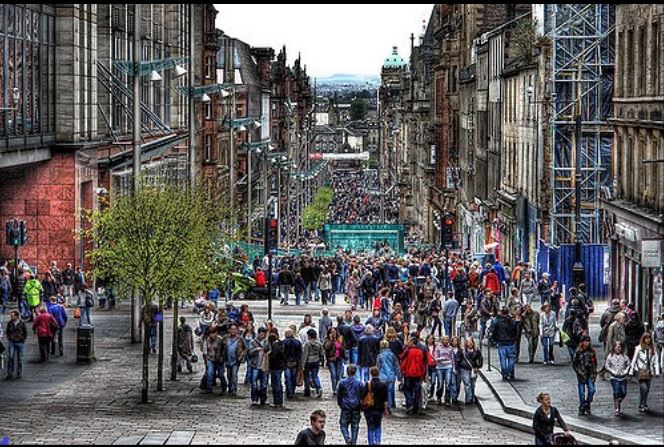Reimagining the city centre: a future without retail?
By Robert Rogerson - Posted on 5 July 2018
With retail increasingly under threat, Dr Robert Rogerson, deputy director of the Institute for Future Cities, examines the future of the city centre.
The city centre plays a fundamental role in enabling exchange and interaction. It is the site of exchange not only of goods and services but also information and ideas, a place where work interacts with leisure and play, and where people’s lives intersect. It is literally the beating heart of the city. And for much of the last hundred years the city centre has traditionally been the centre of retail, the place where citizens (and increasingly visitors) could purchase a more diverse range of products than would be found on their local ‘high street’.
But as recent media headlines have signalled that role is under immense and sustained pressure. This week’s report of 22,000 job losses in 2018 reflects new ways of conducting retail which have eroded the functions of the city centre: the construction of large out of town shopping centre and mall serviced by increasing car ownership, the rise of catalogue and personal shopping encouraging those able to afford it to have deliveries to the home, and in last few decades the rapid growth of online retailing. Each has in turn disrupted the competitive advantage of the city centre as a retail hub and today more than ever has challenged its very existence.
As our recent newspaper articles have asked, what is the future for retailing in the city centre? But arguably there is a much larger question: what would a city centre look like without (significant amounts of) retail?
The Institute for Future Cities is embarking on a two year AHRC funded research project to explore the future of cities centres around the world, looking not only at retail but the other changes which are occurring in city centres.
Alongside partners at the Universities of Northumbria (UK), Newcastle (Australia), Pretoria (South Africa), and Paraiba (Brazil), the project will explore how to understand the changes in – and pressures on – city centres across the globe.
There are some possible futures: the doubling of city centre resident populations in Manchester, Liverpool and Leeds reflects their focus on housing new communities and a future around housing; Stockton on Tees’ vision of its centre becoming a big outdoor community area, on the other hand, is encouraging new social activities beyond shopping filling streets and public spaces to draw people into the area.
The AHRC international project seeks to learn from the experiences of city centres around the world, asking: "who is it for? What is it for? Where does the future lie? How can its future be guided?” It aims to lead to the formation of a new international network to help advance answers to these and emerging research questions.
Dr Robert Rogerson is project lead at Strathclyde University.










